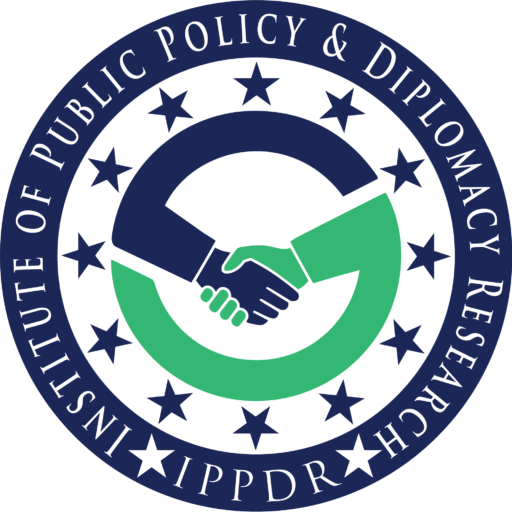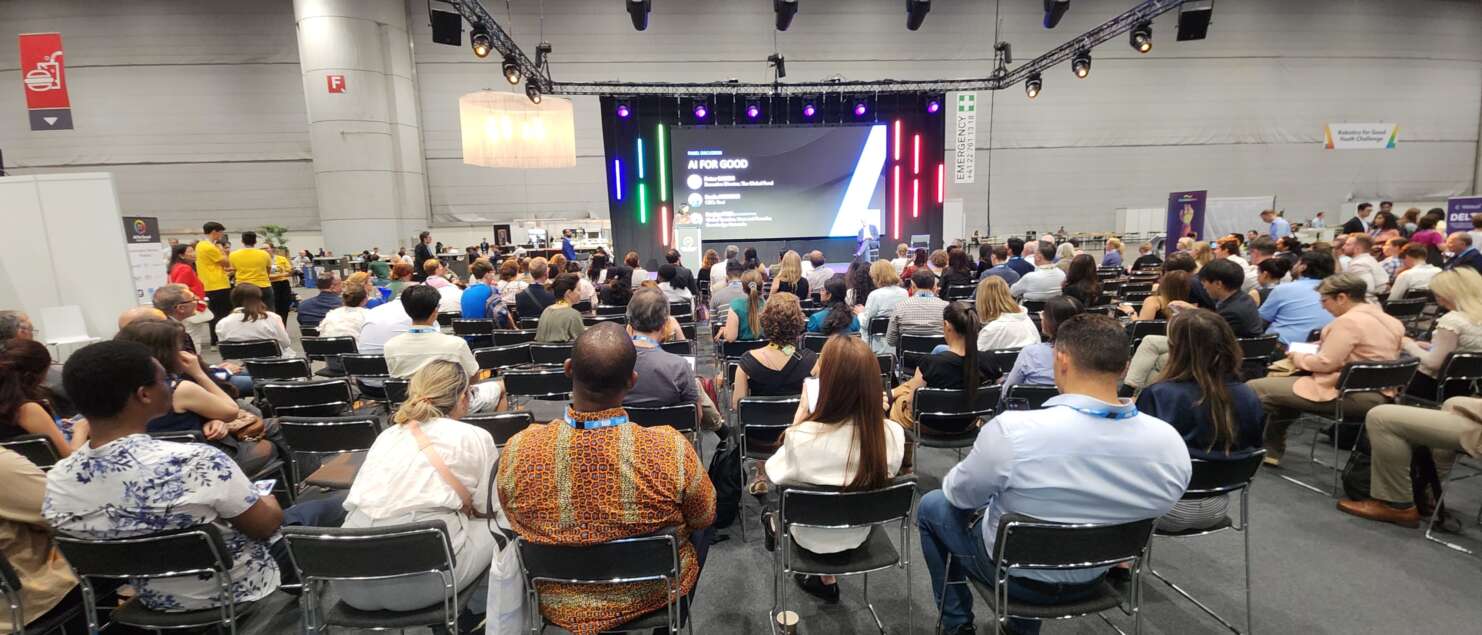AI for Good Expo: Ethical AI and Disability Tech in Geneva
From July 7 to 11, 2025, the city of Geneva once again became the center of global dialogue on innovation and ethics. While WSIS+20 took place in the formal halls of policy discussion, another equally significant event unfolded in parallel at the Palexpo: the AI for Good Global Summit and Expo.
Organized by the International Telecommunication Union (ITU) with the support of the United Nations and other key agencies, this expo offered a remarkable and powerful display of the undeniable potential of artificial intelligence to serve human dignity and well-being.
The Institute of Public Policy and Diplomacy Research (IPPDR) was present to engage, observe, and learn from some of the most promising innovations in AI, not in theory, but in practice. The expo floor was alive with robotics, tools for accessibility, machine learning models built for health systems, and ethical tech projects rooted in social equity.
It was a reminder that AI is not just about the future. It is already here, shaping lives in ways we must understand and guide.
Meeting Sophia and Robert: Face to Face with Intelligent Machines
Among the most talked-about attractions at the expo were the humanoid robots Sophia and Robert. These two AI-driven robots, developed to communicate, respond, and even express emotion, drew large crowds and sparked thoughtful discussions. Their presence wasn’t just to entertain. It was symbolic. They represented the face of AI; visible, relatable, and human-like.


Sophia, known globally for her public speaking and lifelike expressions, spoke about trust, ethics, and the importance of using AI for good. Robert, a newer model with strong human interaction capabilities, demonstrated how conversational AI could support education and companionship, especially for isolated individuals or those with cognitive impairments.
Interacting with them was a powerful experience. They are not perfect, but yet strongly represent a future where machines will not just perform tasks but resourcefully contribute to a world where we stay connected, feel supported, and navigate life with dignity.
For many, these conversations were not science fiction, they were a relevant and symbolic preview of what AI-assisted living might become.
AI for Accessibility: Supporting People with Disabilities
One of the most impactful areas of the AI for Good Expo focused on assistive technologies. Numerous booths enthusiastically showcased AI-enabled tools, richly designed to assist people with physical or neurological challenges communicate, move, learn, and participate in daily life more independently.
A highlight was the RISE robotic system, a platform developed to support people with mobility impairments. Unlike traditional prosthetics or static machines, RISE adapts in real time to the user’s needs, responding to voice commands, environmental cues, and biometric data. It allows users to perform essential tasks and regain some level of physical independence in both home and community settings.
The emotional impact of this technology was undeniably clear. Seeing individuals who had previously relied on full-time assistance move confidently with the support of RISE machines spoke louder than any panel discussion.
It was a reminder that AI must not only push boundaries but likewise serve those whose voices are often left out of tech conversation.
Ethics and Inclusion: A Shared Responsibility
The Expo did not shy away from the difficult questions. Several discussions and demonstrations were grounded in ethics. How can AI be made accessible without becoming another tool of exclusion? What happens when facial recognition software does not recognize certain faces? Who gets to decide what is safe, or fair, or useful?

What stood out was the commitment of many developers, engineers, and startups to center inclusion from the start. They spoke about designing for disabled users, consulting directly with advocacy groups, and creating systems that learn across languages and cultures.
At IPPDR, we often speak about policy frameworks and diplomatic engagement. At the AI for Good Expo, we saw what that looks like on the ground: not declarations, but decisions made at the level of design, engineering, and testing. This is where real change begins.
Youth and Innovation at the Center
Young innovators flooded the arena, from university students working on AI-powered language models for the blind, to grassroots teams building AI tools for speech therapy in underserved communities, the energy was constant and clear. These were not abstract projects but targeted, efficient, and developed with lived experience in mind.
We spoke with several youth participants about the barriers they face lack of funding, limited access to infrastructure, and sometimes, resistance from institutions that don’t see youth as capable policy actors. Yet they persist. Their work echoed what we saw at WSIS+20; young people are not waiting to be invited to be part of the future, they are building their future, because their future starts today.
A Global Gathering with Local Purpose
The diversity of participants was a strength. Developers from Brazil, Tunisia, India, and South Korea stood side by side with NGOs from Switzerland and the UK. Many projects reflected local realities, from earthquake-response robotics to translation AI tools built for endangered languages.
The AI for Good Expo showed that the future of technology is not one-size-fits-all. It is adaptive,designed with context in mind. This is especially true when it comes to global South participation, where the digital divide still shapes who can innovate and who cannot.
We were encouraged to see that the conversation around access is becoming more practical. AI can no longer be limited to research labs or high-income countries. If it is to be truly “for good, it must be available, usable, and responsive to the needs of all communities, not just the connected few.
The AI for Good Expo did not claim to have all the answers. But it asked the right questions and brought people together who are working hard to answer them. From robotics to data ethics, from disability inclusion to diplomatic responsibility, the message was consistent: AI must serve people.
IPPDR team’s observation, in Geneva, we saw what that looks like. The future of AI is not about machines replacing people. It is about technology supporting lives, protecting dignity, and expanding what’s possible.
What comes next for IPPDR
Following our time in Geneva, the Institute of Public Policy and Diplomacy Research is preparing its next global engagement: the Youth Summit on Peace and a Sustainable Future: A Collaboration for a better world taking place July 22–26, 2025, in Mexico City.
This summit will explore how artificial intelligence intersects with peacebuilding, policy, education, diplomacy, and healthcare. It will provide a space to discuss how AI tools can help, or harm; local efforts to build more peaceful and fair societies. We will examine the risks, opportunities, and real-world implications of technology on social policy and human development.
Participants will include youth leaders, educators, government officials, and civil society representatives. The sessions will be practical and open. Together, we will design recommendations that promote responsible use of AI and align with national development goals.
For more information: www.ippdr.org

